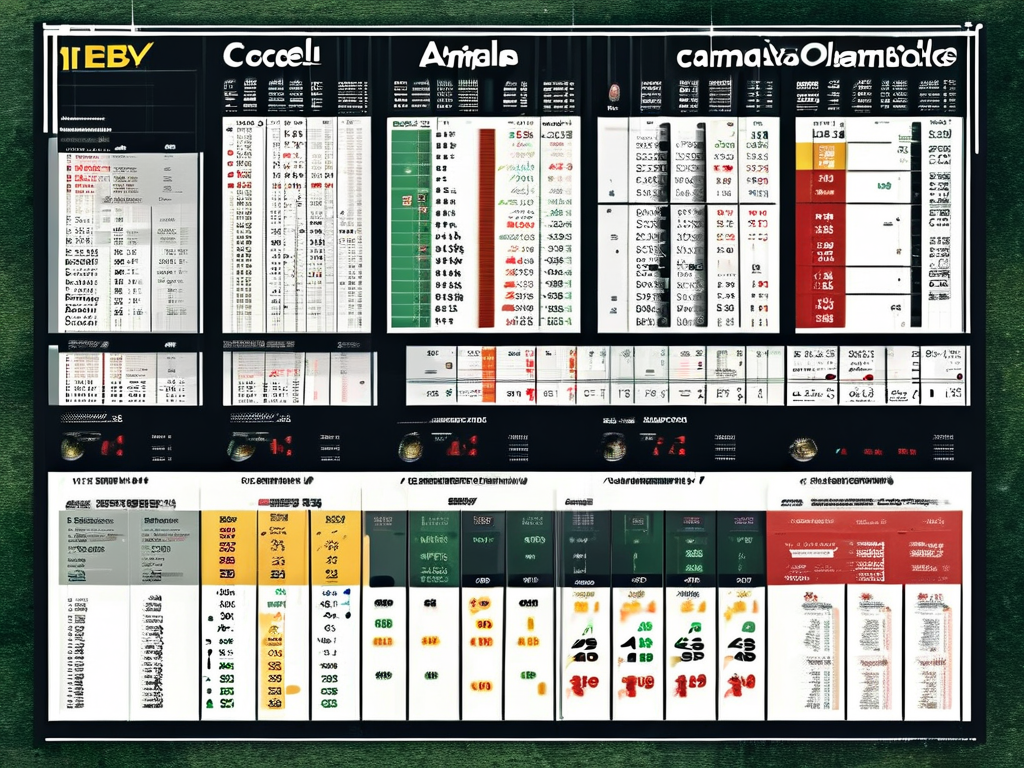In the dynamic world of sports betting, football lottery enthusiasts increasingly rely on mathematical models and statistical tools to enhance their decision-making. This article explores essential formulas, algorithms, and data tables widely used in football lottery analysis, offering practical insights for both novice and experienced bettors.
Core Formulas in Football Lottery
-
Win Probability Calculation
The foundation of football betting lies in estimating team win probabilities. A simplified formula involves historical performance metrics:Win Probability (%) = (Team Goals Scored / Total League Goals) × 100Advanced models incorporate factors like home/away performance, player injuries, and weather conditions.

-
Odds Conversion Algorithm
Bookmakers’ odds can be converted to implied probabilities using:Implied Probability = 1 / Decimal OddsSavvy bettors compare these values with their own calculated probabilities to identify value bets.
-
Expected Value (EV) Model
The EV formula determines long-term profitability:EV = (Probability of Win × Potential Profit) - (Probability of Loss × Stake)A positive EV indicates favorable bets over time.
Key Algorithms for Predictive Analysis
Modern football lottery strategies leverage computational approaches:
-
Machine Learning Classifiers
Algorithms like Random Forest or Logistic Regression analyze thousands of match variables – from possession stats to referee tendencies – to predict outcomes. Training datasets typically include 5+ seasons of league data for reliability. -
Monte Carlo Simulation
This statistical technique runs 10,000+ match simulations using Poisson distribution models to account for goal-scoring randomness. Outputs generate probabilistic scenarios for scorelines. -
Elo Rating System Adaptation
Originally designed for chess, this algorithm now evaluates team strength dynamics. Teams gain/lose points based on match results relative to expectations:Updated Rating = Current Rating + K × (Actual Result - Expected Result)The K-factor (usually 20-40) determines rating volatility.
Essential Statistical Tables
Effective football betting requires organized data analysis:
1. Historical Head-to-Head Table
A comparative grid showing past 10 meetings between two teams, including:
- Match dates and venues
- Scorelines and goal timestamps
- Discipline records (yellow/red cards)
2. Team Form Matrix
A 5-column table tracking recent performance metrics:

- Last 5 matches’ results (W/D/L)
- Goals scored/conceded ratio
- Average possession percentage
- Shots on target per game
3. Odds Movement Tracker
A time-based table monitoring bookmaker price fluctuations:
- Opening odds vs. current odds
- Percentage change calculations
- Market volume indicators
Practical Implementation Example
Consider a hypothetical Premier League match between Team A (home) and Team B (away). By combining:
- Elo ratings (Team A: 1800, Team B: 1750)
- Recent form (Team A: WWLDW, Team B: LDLWL)
- Bookmaker odds of 2.10 for Team A victory
The analysis process might involve:
- Calculating Team A’s win probability using Elo difference
- Comparing with implied probability from odds (1/2.10 ≈ 47.6%)
- Running Monte Carlo simulations incorporating both teams’ xG (expected goals)
- Determining if the 2.10 odds offer positive expected value
Ethical Considerations
While mathematical models improve prediction accuracy, responsible betting practices remain crucial. The Chinese Sports Lottery Administration emphasizes:
- Strict adherence to legal betting channels
- Budget allocation not exceeding 5% of disposable income
- Emotional detachment from analytical outcomes
Mastering football lottery formulas and algorithms requires continuous learning and data validation. By systematically applying these tools alongside updated statistical tables, bettors can develop more disciplined, evidence-based strategies. However, no model guarantees 100% success – the unpredictable nature of sports ensures both challenge and excitement in every match.









